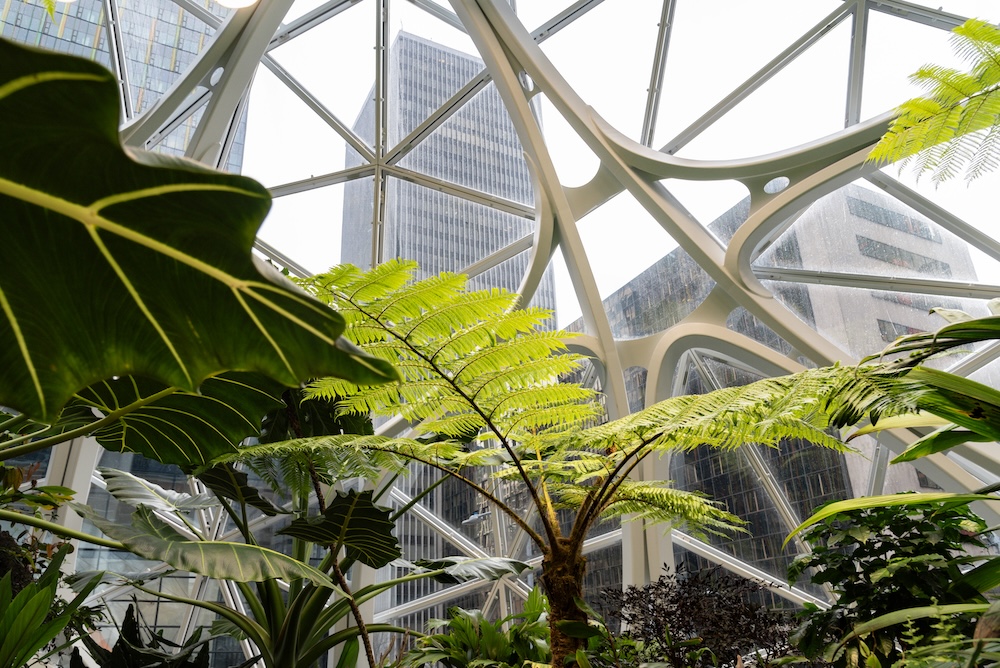Reimagining Urban Life Through Nature
Cities weren’t built to be biophilic. They were built to be efficient, industrial, and fast. But as we face record-breaking heat, rising mental health challenges, and biodiversity collapse in 2025, that model is showing its cracks.
Enter the concept of the biophilic city — one that integrates nature not as decoration, but as infrastructure, therapy, and co-architect of our shared space.
Biophilic design doesn’t just make cities greener. It makes them healthier, more livable, and more resilient. And science is backing it up.
What Is Biophilic Design?
Biophilic design is the practice of bringing natural elements into built environments to improve physical, emotional, and ecological wellbeing. It goes beyond parks and landscaping. True biophilic design:
- Integrates living systems into buildings
- Mimics natural forms, materials, and patterns
- Prioritizes sensory connection to nature (sight, sound, smell, touch)
- Supports ecological function and biodiversity
In short, it makes cities feel alive — and that changes how people live within them.
Why It Matters in 2025
Modern cities are under strain:
- Over 55% of the global population now lives in urban areas, projected to hit 68% by 2050
- Urban heat islands are raising city temperatures by 4–7°F compared to rural zones
- Mental health disorders are rising in dense, concrete-heavy neighborhoods
- Biodiversity loss is accelerating in metropolitan regions
Biophilic cities offer a blueprint for reversing those trends — by working with nature, not against it.
How Nature Affects Human Physiology
Numerous studies show that even brief exposure to natural environments can:
- Lower cortisol (stress hormone) levels
- Reduce blood pressure and heart rate
- Improve concentration, memory, and creativity
- Increase serotonin and feelings of wellbeing
A 2023 study published in Frontiers in Psychology found that people who spent just 20 minutes in a tree-lined urban park experienced significant cognitive restoration compared to those in a paved plaza.
Biophilic elements like natural light, running water, wood textures, and plant life reconnect our nervous systems to patterns we evolved with.
Real-World Examples of Biophilic Cities
Singapore: A Garden City in the Sky
Singapore is one of the most advanced biophilic cities on Earth. Its urban core includes:
- Rooftop gardens on nearly every high-rise
- Over 300 kilometers of green corridors linking parks and natural areas
- Smart irrigation and vertical farming systems integrated into public spaces
Result: reduced heat island effects, increased biodiversity, and a globally recognized quality of urban life.
Portland, Oregon: A Forest-Forward Framework
Portland weaves nature into its city plan through:
- Protected urban forests and tree-planting mandates
- Green street systems that filter stormwater with plants
- Habitat corridors for pollinators and birds across neighborhoods
Its urban tree canopy helps cool homes, reduce runoff, and improve air quality.
Milan, Italy: The Vertical Forest
Milan’s Bosco Verticale (“Vertical Forest”) is a pair of high-rises that host over 900 trees and 20,000 plants on balconies — an architectural feat that:
- Absorbs 30 metric tons of CO₂ annually
- Reduces energy consumption by 30%
- Provides habitat for over 20 bird species in the heart of the city
It’s not just a building — it’s a living ecosystem in vertical form.
Melbourne, Australia: Nature as Climate Infrastructure
Melbourne’s Urban Forest Strategy aims to increase canopy coverage to 40% by 2040, using native species to:
- Cool the city
- Reduce water usage
- Connect people to indigenous landscapes
The initiative also includes educational campaigns that invite citizens to write “letters to trees,” fostering emotional connection to public green space.
Health, Equity, and Climate Resilience
Environmental Justice Through Access to Nature
Access to green space is not evenly distributed. In many cities, low-income and marginalized communities have less tree cover, fewer parks, and higher exposure to pollution and heat.
Biophilic planning can reverse this by prioritizing:
- Tree planting in heat-vulnerable neighborhoods
- Converting vacant lots into urban oases
- Including cultural and indigenous plants in public design
Nature is not a luxury — it’s a public health tool.
Cooling the City, Naturally
Biophilic elements reduce urban heat islands by:
- Shading streets and buildings
- Evaporative cooling through plant transpiration
- Reducing the need for energy-intensive air conditioning
In 2025, with global temperatures rising, this passive cooling is not optional — it’s essential.
How You Can Support Biophilic Design
You don’t have to be an architect to bring nature back into the city.
Try:
- Planting native species in balcony or sidewalk gardens
- Supporting local policies for tree equity and green zoning
- Volunteering for park maintenance or green infrastructure projects
- Designing your home or workplace with natural textures and airflow in mind
Even advocating for one more tree on your block can make a long-term difference.
Cities Can Heal — If We Let Nature In
Biophilic cities challenge the old narrative that nature and progress are at odds. Instead, they invite a new story: cities as ecosystems, full of life, resilience, and reciprocity.
In a time when climate solutions feel overwhelming, the biophilic approach is grounded, scalable, and beautiful. It reminds us that progress doesn’t have to look like concrete — it can look like a flowering vine on a rooftop, a forest trail in a metro park, or a building that breathes.
We don’t just need green cities. We need living cities. And we’re ready to build them.









Reader Interactions